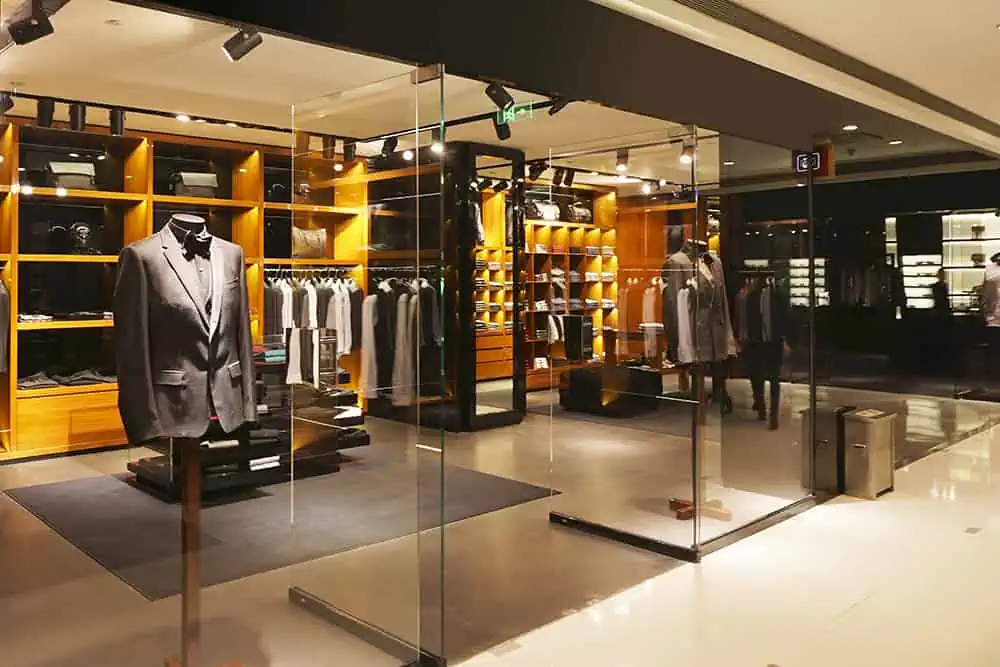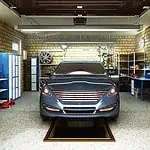Lighting is essential in all spaces but is more vital in retail stores. Adequate lighting in a retail store is necessary for utility and aesthetics. You cannot expect customers to come and shop in a dull environment. Customers expect to look at tiny details before deciding, which is only possible if there is sufficient light. Furthermore, the marketing elements have to be properly lit to attract customers to stores. And if you are wondering how to light a retail store. Let’s get straight to it.
Why is Retail Lighting Important?
Light plays a role in everything from setting a mode to enabling someone to make a decision about a product. A well-lit store invites customers to it and lets them take a detailed look at the products.
Furthermore, it also guides the customers to look for products in other areas. It also creates trust in the customers as it projects that stores have nothing to hide in their products. Proper lighting also creates a relaxing environment that makes the customers spend more time in-store and drives sales.
In addition to making the environment suitable for customers, it uplifts employees’ moods. As discussed earlier, lights can impact moods. For example, a light with a higher color temperature mimics natural light and makes people active. In contrast, lights with cooler temperatures compel the body to produce melatonin, a sleep hormone. And thus, making the people in the environment drowsy and laid-back.
The right combination of lights will provide both benefits. It will increase sales by attracting customers and compelling them to purchase stuff. And also it uplifts the morale of the employees and increases productivity.
Benefits of Retail Lighting
There are various kinds of retail lighting. Let’s take a look at them;

Attracts Customers
A well-lit store invites more customers because it highlights the interior and compels people to step into it. For example, in a jewelry store, lights will make the products shine and sparkle to attract customers. Potential customers will be able to see the jewelry from a distance which will compel them to visit the store. Furthermore, store owners can use a combination of different colors to make the store even more attractive. Primary colors have been shown to have the highest conversion rate so you can use red, yellow, and green colors to attract more people.
Drives Sales
An important factor that drives the sale is understanding every product detail. And good lighting enables that. Because of the proper illumination, customers will understand the tiny details of the design of a product. It will eliminate all confusion regarding the quality of a product and thus compel more people to purchase it.
Increase Brand Awareness
All retail stores have signs and advertising banners on their facade. These marketing elements are there to enhance brand awareness. And when you light these elements properly, the stores become visible even from distances. It makes the store stand out and draws more people towards it.
Increases Productivity
Lights impact the mood of employees just as much as they influence customers. You must light the store with colors and color temperatures that keep the employees active. It will make them more efficient in communication with the customers and drive sales.
Types of Retail Lights?
Lighting a retail store is challenging, and understanding different light types is a must to carry it out properly. Let’s look at them;

Ambient Lights
The primary source of illumination in a store is ambient light. The fundamental purpose of ambient light is to enhance the utility of a space. You must ensure that ambient light provides adequate illumination. It should be neither too bright, which produces glare, nor too dull to compromise the utility of the space. You must select the proper brightness and size of lights based on the ceiling height and the space size.
Accent Lights
You can use accent lighting to draw customers to a particular area or product in a store. Essentially, it is a focus light that retail stores can use to highlight new arrivals. Accent light will make these products shine and draw people toward them.
Decorative Lights
As the name indicates, such lights enhance the decor of a retail store. The purpose of such lights is to attract customers to the store. Furthermore, retail stores can use different combinations of colors to enhance their aesthetics. You can channel your creative side with these lights but ensure that the light style corresponds to the nature of business.
Task Lights
Some parts of retail stores require more illumination than others, and this is where you will use task lights. For example, changing rooms requires it because customers want to take a detailed look at the dresses before purchasing them.
LEDs for Retail Stores?
You can use various lights to illuminate and decorate retail stores, including halogen lamps and incandescent bulbs. But it is best to use LEDs because of several reasons. You will have to use multiple lights to illuminate the store correctly. And these lights will consume a lot of energy. You need a light source that is the most energy-efficient, and LEDs are just that. LEDs use about 90% less energy than an incandescent bulb, making them the best fit for retail stores.
Furthermore, you would only want to replace the lights in a couple of months. But you will have to engage in it should you use the traditional bulbs. However, with LEDs, there is no such problem. LEDs last about 25 times longer than conventional bulbs, which means once you have installed them, they wouldn’t need a replacement for at least a couple of years.
That said, LEDs cost higher upfront, but the amount you save in energy bills will make up for it. Furthermore, it also keeps the nuisance of changing the bulbs every couple hours. If you account for both factors, LEDs are the only suitable option for retail stores.
How To Use LED Lights in Retail Lighting?
Lighting a retail store requires a plan and an understanding of your preferences. The following steps will help you light the retail store properly.

Understand Different Types of Retail Lights
There are four basic types of retail lights. These include ambient, accent, task, and decorative lights. We have discussed these types in the previous section. You must know the applications of these lights to light a retail store properly. Their understanding will also help create an effective plan to light the store in a way that enhances aesthetics without compromising utility.
Use The Right Tone and Brightness For Ambient Light
As discussed previously, ambient light is the most important for any space. The fundamental purpose of such light is to enhance utility in an area. You cannot afford to go wrong with ambient light because it is a foundation for the rest of the lighting. The perfect ambiance light has ideal brightness and tone. Brightness is self-explanatory and is the illumination a light offers. Tone, on the other hand, refers to the color of light.
The brightness of the light can be understood by the lumens a particular light source emits. LEDs that offer 20-40 lumens per square foot work best for areas that require a relaxed environment. At the same time, the LEDs with 60-80 lumens per square offer more brightness that you can use in the regions that need more illumination.
The tone is essentially the color of light. On the Kelvin scale, the light with a higher color temperature mimics daylight by delivering a calmer tone. In comparison, lights that have lower temperatures provide a warmer tone. You can use a combination of such lights to create a perfect environment for a retail store.
Select the Appropriate Light Fixture
Light fixtures are just as important as a light source when lighting a retail store. You have various options to pick from. These include adjustable, pendant, reel, suspended luminary, and eyeball down a spot, to name a few.
Each of these fixtures projects the light differently. For example, flush recessed fixtures disperse the lights more than the eyeball down. Similarly, suspended mounted luminary distributes the light evenly while the track light fixtures focus on a specific area.
Different light types will require varying fixtures. For example, ambient light will work best with a fixture that distributes the light evenly. Whereas the accent or decorative light might look better with a fixture that concentrates it.
Plan The Lighting
Once you have understood everything there is to know about lighting a retail store; you should create a plan. You can get a blueprint of the store’s layout to understand the lighting requirements of each area. Determine the correct tone, brightness, and fixture for each area to light the store properly. You can be creative with the design but ensure that whatever you do matches the retail store’s offerings.
Things To Know Before Lighting a Retail Store
Before lighting a retail store, there are some factors that you must know. These include;

Color Temperatures
Color temperatures of LED lights determine the effect a light will have on a mood. You can understand the color temperature using a kelvin scale. Lights with color temperatures under 4000 K are warm lights that create a relaxing mood. In contrast, the lights with more than 4000K color temperatures mimic daylight. Such lights make the people in the environment more active. You have to use the right color temperature to create a relaxing environment for customers, but it does make the employees feel drowsy.
Color Rendering Index
The color rendering index is a parameter that tells how much a light mimics natural light. Lights with higher CRI make the objects confined the same exactly as they look in daylight. You need such lights in the store so the customers get a good idea of how a product will look outside the store. Thus, you should go with lights with a CRI of 80 or higher.
That said, only some of the areas of the store need to look exactly as they look in natural light. For example, a decoration piece might look better with the light of lower CRI. The point is you should understand the CRI and use it to create effective lighting.
Beam Angle
Beam angle, as the name indicates, is the angle at which a light source projects its beam. An incorrect beam angle can create glare and produce inconvenience for customers. You should select the beam angle according to the requirement of space. For example, an inclined beam angle will work better if you want to focus on a specific object. But a wide beam angle might work better for ambient light.
Smart LEDs
Smart LEDs offer more flexibility to store owners. You can change the color temperatures, blinking patterns, and brightness of such light from your smartphone. With such lights, you can change the mood of an environment with a few tweaks on your phone. For example, if you use them in accent lighting, you can change the color depending on the product that you are displaying. However, such lights are more expensive than regular LEDs, so make sure to account for that in your budget.
FAQs
To create an ideal environment in a retail store, you must use a combination of light types. You can enhance the utility with ambient light and highlight some areas with accent and task lights. The right combination depends on the dimension of the store.
Appropriate lighting draws more people to retail stores and allows them to examine the products closely. Furthermore, it creates a relaxing environment which drives sales for the store.
The four types of lights are ambient, decorative, accent, and task lighting. Each of these lighting has a different purpose, which must be understood to use in the right manner.
The four most important lighting functions in any space include setting a mode, increasing visibility, driving motivation, and promoting composition. An ideal lighting will have all four of these characteristics.
Conclusion
Lighting a retail store is a challenging feat. A lot of planning should go into it to create an inviting environment for customers without compromising utility. But things get a little easier if you know the basics of lighting. And we hope this piece has provided you with that. That is all we had on retail lighting. We hope it has helped.
LEDYi manufactures high-quality LED strips and LED neon flex. All of our products go through high-tech laboratories to ensure the utmost quality. Besides, we offer customizable options on our LED strips and neon flex. So, for premium LED strip and LED neon flex, contact LEDYi ASAP!
















